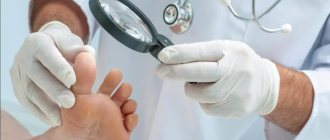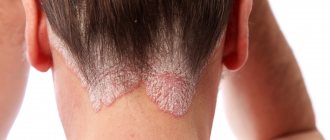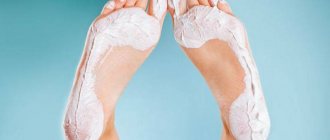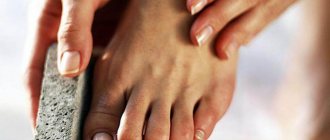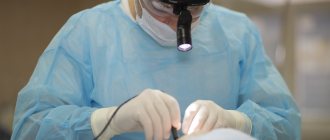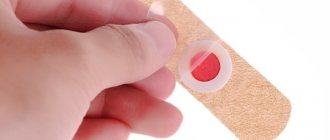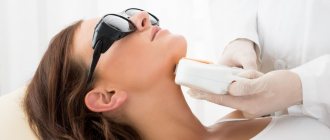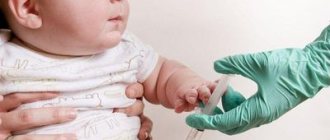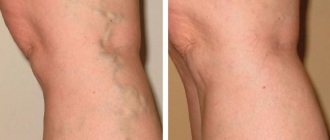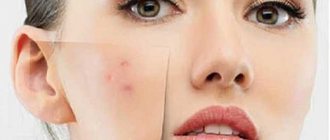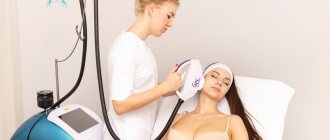A callus is a skin lesion small in size and depth that occurs from physical activity, sports, or wearing uncomfortable shoes. Calluses in the form of chafing often occur from tight, new shoes. The skin reacts to exposure with hyperkeratosis - excessive keratinization (thickening).
Dry calluses may not cause discomfort for a while, but usually hurt when pressed. It is advisable to immediately take measures to remove dead skin and heal tissue. If you do nothing, the problem will become deeper and wider in the literal sense of these words. In the future, tissue infection, suppuration, and related problems may arise.
For treatment, doctors can recommend various products in the form of gels, ointments and infusions, but the most effective and simple remedy is considered to be a patch against calluses, the advantages of which are:
- does not require special knowledge or special conditions for dressing;
- securely fixed on the callus;
- protects the skin from further damage, penetration of microbes, and development of infection;
- softens the stratum corneum for painless and quick removal;
- reduces pain;
- stimulates tissue regeneration;
- serves as a prevention of inflammation and cracks;
- the medicinal composition in the form of impregnation remains on the injured area and does not stain clothing, unlike ointment.
The medical supply store offers a wide selection of plasters, including waterproof, clear, and highly specialized ones. All that remains is to choose the appropriate option and follow the instructions for use.
Treatment of calluses and corns. Modern methods of therapy
Treatment of calluses is not the biggest problem of modern medicine.
But calluses cause inconvenience, and they just look ugly. Therefore, their competent removal determines the comfort of human life. Depending on the tissue structure, calluses are divided into:
- dry – normal roughening of the skin, without a cavity;
- aqueous - rubbed skin forms a cavity in which there is a colorless, watery, odorless liquid;
- blood - the same cavity, only with blood content;
- calluses with a core are the same dry calluses in which, due to constant irritation, a compaction has formed in the thickness of the tissue (core) in the same place.
Corns are diagnosed separately. The difference between them and calluses is that:
- they are usually smaller in size;
- “built” from a compacted center, around which there is a circular (circular) inflamed area of skin;
- painful even with slight pressure.
Removing corns, like calluses, is not a complicated procedure.
Causes
Multiple factors lead to calluses on the hands. They are divided into 3 large categories. Calluses occur as a result of physical activity, professional activity, and vitamin deficiency.
The most common cause of calluses on the palms is physical exercise and work activity. The skin is rubbed into calloused formations while playing sports or working in the garden. Athletes get them from exercises on the horizontal bar, parallel bars, and with a barbell. Amateur gardeners rub their palms and fingers while working with shovels, pitchforks, and hoes.
With constant friction, long-healing blisters filled with liquid or dried out crusts appear. Wet calluses are formed as a result of irregular exercise. First, lymph accumulates under the skin. If the friction force increases, the capillaries in the blisters burst and fill them with blood.
Calluses are formed as a result of professional activities. This leads to playing plucked instruments (usually a guitar, less often a harp, a balalaika), and working in various workshops. The palms and fingers are constantly in contact with the instrument, the skin rubs against it, which leads to damage. In this case, dry calluses are mainly formed.
A deficiency of retinol and tocopherol in the body makes the skin dry and hypersensitive to mechanical stress. The epidermis is easily exposed to irritating factors. In case of vitamin deficiency, it is necessary to conduct 2 courses of vitamin therapy annually. A balanced diet helps to avoid the problem. The menu should include foods enriched with vitamin A and E: vegetables and fruits rich in carotene, vegetable oils.
Anatomical and physiological essence of calluses
To successfully treat calluses, you need to understand why they occur.
The skin is designed in such a way that it is not afraid of external irritants (chemical, mechanical, thermal). And thanks to the regular proliferation of cells, it is able to quickly regenerate (old cells are rejected, new ones appear in their place).
But with prolonged mechanical action, friction, pressure, excessive irritation, the skin becomes rough and calluses appear. Most often they are formed due to permanent friction on the hands and feet. Although calluses are often observed on the elbows, tongue, gums and even in such unusual places as the male penis, labia in women, nipples and areas of skin under the nails.
More information about what atypical places calluses can form and what this means for the patient can be found on the pages of our website https://www.dobrobut.com/. Also on the site you will find other useful information about calluses and corns.
Prevention
Why wait for calluses to appear if they can be prevented? By taking care of your health in advance, you can avoid unnecessary hassle in the future. In order to prevent the appearance of calluses, you need to follow a few simple rules:
Avoid direct contact with mechanical objects on the skin. The most common cause of buildup is excessive friction, so it is recommended that you wear gloves when performing difficult physical work.
After work, you need to wash your hands and thoroughly lubricate them with moisturizer.
Spa treatments will help your hands relax and soften rough skin. It is recommended to use creams with a protective effect. After applying this product, a silicone film is formed on the skin, which will reduce friction and prevent dirt from getting into microcracks.
Writing less means typing more. If a person develops calluses due to the friction of a pen and his professional activity is related to writing, but he has the opportunity to type on a computer or typewriter, then he should not neglect it.
Writing technique. Calluses can occur due to improper writing technique. If you slightly change the way you hold the pen, the callus will disappear over time. Typically, a callus appears on a “weak” spot, which is located on the joint where the phalanges of the middle finger meet. If you hold the handle in the area where the pad of your middle finger is located, friction will be significantly reduced. In order to get used to the new method, you need to practice a little.
Comfortable handle. The pen plays a very important role for comfortable writing. There are writing utensils that have a hard core and create friction, which contributes to the development of calluses.
People prone to the appearance of growths should pay attention to the presence of rubber pads when choosing handles.
Special attachment for the finger. It can prevent unnecessary contact of damaged finger skin with the body of the pen.
The silicone nozzle has two holes: one for fixing the handle, the other for your finger. This device will protect the callus on the middle finger from friction.
Advice! You can only choose a comfortable pen for writing through experience, based on your preferences. If the handles do not satisfy the requirements and continue to rub the callus, then you can experiment a little. For example, stick a soft patch on a writing object.
Treatment of calluses, basic methods
You can get rid of roughening (callus) of the skin in different ways. Treatment for calluses depends on their type and severity. In the arsenal of doctors are:
- therapy with medications that “dissolve” skin roughness;
- anti-callus patches;
- surgical removal (excision);
- The most modern method is laser removal of calluses.
Removing calluses using surgical instruments is performed not only by surgeons, but also by podiatrists - specialized specialists who deal exclusively with the feet.
Uroderm for calluses
The ointment contains 30% urea.
The product is used not only for calluses.
Indications are also:
- psoriasis
- keratosis pilaris
- ichthyosis
- onychomycosis
- ingrown nail
- eczema
Uroderm is used for skin care for diabetes.
For preventive purposes, it is used for rough skin of the hands or feet.
Urea has a keratolytic effect.
It eliminates excess keratinization of the skin.
How it works:
- Urea loosens keratin by breaking down molecular bonds in protein molecules.
- Moisturizes the skin by attaching water molecules.
- Inhibits the formation of keratin.
The product is applied to the callus 2 times a day.
You can use a bandage if severe peeling occurs.
Sometimes Uroderm is applied under a patch for 2-8 hours.
Side effects:
- itchy skin
- redness
Treatment of dry calluses on toes and hands
If such calluses have appeared recently, they do not need to be excised. There is every chance that such calluses can be removed by using gels and creams with keratolytic properties - that is, those that prevent changes in skin cells, which causes its roughening.
Some of the most effective ingredients of these ointments and gels are:
- salicylic acid;
- benzoic acid.
Treatment of dry calluses on the toes (feet) and hands (palm of the hands) may take longer than in other locations. The reason is that the skin here becomes calloused more intensely and to a greater depth. To be more effective, the removal of dry calluses on the feet and hands should be preceded by softening them (achieved by simple immersion in liquid).
Anti-callus cream Amanita against
Amanita anti is a foot cream that has many uses.
It is used not only for calluses, but also to destroy fungus, eliminate leg fatigue, sweating, and heal cracks and scratches.
A product of questionable effectiveness.
It is assumed that it saturates the epidermis with useful substances, increases the immunity of the legs, renews cells, stimulates blood circulation and kills pathogenic microorganisms.
Contains:
- fly agaric
- chestnut mushroom
- echinacea
- lofant
- plantain
- chaga
- cowberry
- willow
- mint
- oregano
The product is applied to the skin twice a day.
You can hardly count on a real effect.
There are no components in the composition that could eliminate the callus.
Treatment of dry calluses with a rod
In this case, the surgical method is more effective, since it is technically impossible to lubricate the roughened core deep in the tissue with keratolytic ointments or gels in order to soften it.
Treatment of dry calluses with a core is a small surgical operation in compliance with the principles of asepsis, that is, with the treatment of the surgical field and the doctor’s gloves with antiseptics. Local anesthesia is mandatory, especially if the callus is old and it is assumed that the rod is deeply embedded.
Callus removal proceeds as follows:
- First, the callus itself is excised;
- Next, a neat incision is made in depth;
- Through it, the clamp grasps the rod and removes it.
It is easier to remove a callus on a toe with a rod than on the heel, because the length of the rod will not be long and the cut will not be deep.
Removing callus using drilling
This procedure can be carried out in a pedicure salon.
During the manipulation, a special device resembling a drill is used.
The procedure does not require the use of anesthesia.
Since it is not accompanied by pain.
Drilling/excision of callus areas is carried out using special attachments.
An antibacterial ointment is first placed in the deepening of the callus to prevent the development of the inflammatory process.
For the first few days, the patient may feel minor discomfort, which goes away on its own and does not require treatment.
Dry callus is removed using a similar method, but provided that it is not neglected.
The drilling procedure has certain disadvantages:
- If the rod is located deep enough, this manipulation may be ineffective. Often several manipulations are required to completely remove the callus.
- In the process of drilling out the keratinized area of the dermis, damage to healthy skin is possible. The procedure requires a highly qualified specialist.
- This type of callus removal is a contact type of procedure, which means it is accompanied by an increased risk of infection.
